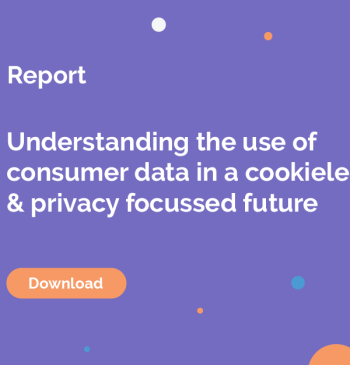Customer management, Targeting & Programmatic Marketing
Tips for finding profitable new customers
- By smrtr insights
- No Comments
01 Feb

The basics of targeting are timeless – find the audience that is most likely to buy your product or service and send them relevant and appealing messages. The more defined that audience is the more likely you are to be able to tailor a message that provides a higher response.
With the rise of third party cookies as a way to track users as they navigate the web through the 2000s, online targeting emerged as the leading way to send the right message, to the right customers, at the right time.
However, despite the proliferation of data and targeting technology, many companies are still not maximising the potential to find profitable new customers. Adding to this, third party cookies are soon to be discontinued on Google Chrome, meaning there is now a need for businesses to find ways to target customers that don’t rely on browsing behaviour.
In this piece, we look at some of the key steps to maximising profitable customer growth using data.
1. Identify your most profitable customers
The Pareto Principle suggests 80% of the consequences come from 20% of the causes. This rule of thumb applies to most businesses where a smaller proportion of higher value customers contribute the majority of the revenue.
A simple revenue or profitability based segmentation of your customer base will enable you to identify this segment and create opportunity to understand what makes them different to the general population. If you haven’t done so already, this requires your billing and revenue systems to be matched to your customer profile. In our experience, this isn’t as common as you’d think so you may need to manually match two separate files to achieve this.
2. Take stock of your data
Organisational data is one of the most valuable resources companies have at their disposal when it comes to targeting. Previous purchase data, in particular, will help when it comes to targeting customers. Building out recent purchase data and combining it with other demographic criteria that might be available, such as age, location, gender and occupation can form the basis of a customer profile.
The first step here is identifying what data you have available as a business and how usable it is. Businesses now collect a raft of data through their day-to-day operations and many might already have the information required to build accurate customer profiles. Third party data companies, such as smrtr, offer data audit services to help you take stock of your data.
3. Establish their defining attributes with other data sets
Many companies make the mistake of only looking at their internal data on customers when this only represents just a sliver of a customer’s life. By integrating data sets covering other aspects of their lives, it reveals patterns and signals that further define the cohort and help to understand the ”why” of their behaviour.
While internal data is extremely useful for building an ‘ideal’ audience segment, the best results come when this data is combined with external sources to offer much wider insight and application. By combining this third party data, businesses can understand how their audience segments translate beyond just their customer base and targeting can be achieved at a far more granular level. Examples of third party data might include an indication of personal wealth, retail purchases or hobbies.
Getting creative when it comes to combining data sets that might seem unrelated is often a great way to uncover hidden insights that can help with targeting. For example, property data indicating the value of a house and how much it has changed, or when it has been sold has been proven to highly correlate with purchases of new cars, furniture and holidays.
Combining these data sets in an accurate, structured manner and leveraging analytics will provide a formula that can be applied to other customers and prospects to identify which show the most potential.
4. Find their lookalikes
While there are unlimited media channels to reach your target segment, the first place to search is your own database. Not only is it free, but these people already have some affinity to your brand. While they may appear to be low value to you, for many that is only because the majority share of their wallet is elsewhere. Cross-sell analytics incorporating specific triggers and segmentation methods are a great way to serve the “next best offer” to these people.
To achieve scalability, applying this new found targeting to programmatic marketing will enable you to target your newly defined segment in the outside world with much greater precision.
At smrtr, we have developed privacy-compliant ways that help our partners identify and target customers using aggregated data from 16 million Australians, rather than third party cookies.
To find out how smrtr can help you with your targeting needs, contact us and we’ll be in touch in the next business day.
By Steve Millward, General Manager – Commercial at smrtr



